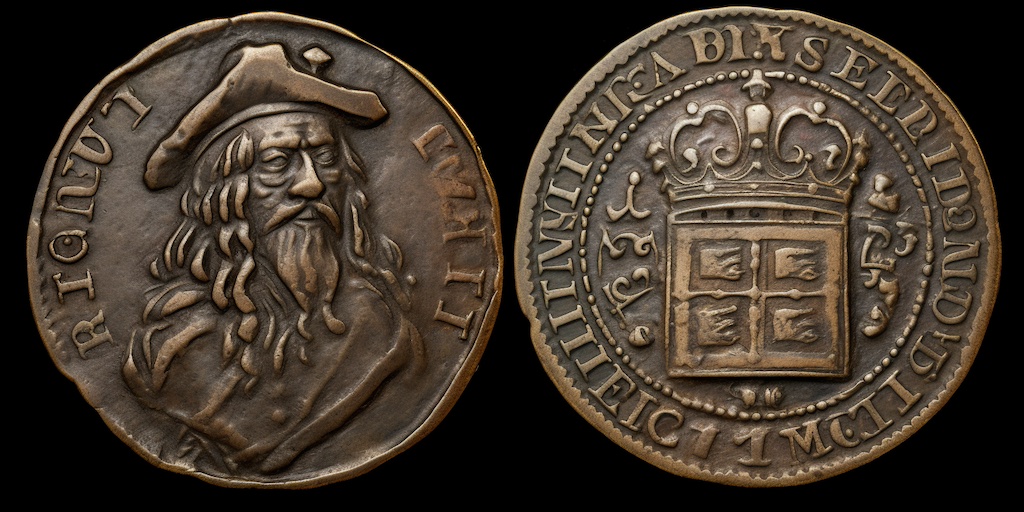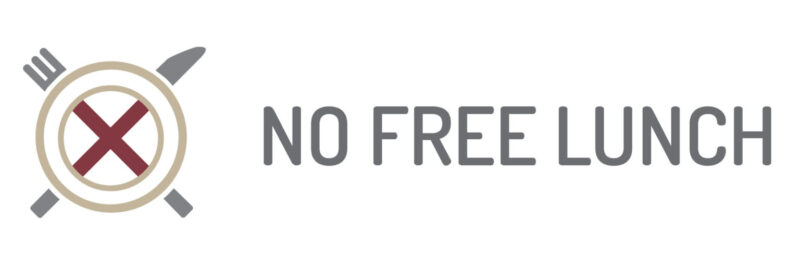Find out why 17th-century London had a token economy with 4,000 variants circulating as a substitute for official money and why they abruptly disappeared.

17th-century London had a thriving economy based on substitutes for official coins known as tokens, like those you might use at a funfair or in a laundrette. Most of these ancient tokens are buried in the muddy banks of the Thames, so why didn’t they last?
The peak of England’s token economy
Tokens were popular at various points between the 16th and 19th centuries as substitutes for official small change, which was in perennially short supply. However, the middle of the 17th century is regarded as the apex of token popularity.
The catalysts for the emergence of localised money substitutes and the reasons why so many were tossed into London’s arterial river provide an important lesson in monetary history and a warning for the fate of the modern crypto-token economy.
To understand the legacy of tokens and why there was search demand for money substitutes, we first need to understand what money is, including the distinction between the physical money we use today and that used in the Middle Ages.
Taking money at face value
It might surprise you to learn that modern money isn’t worth the paper it’s written on, and the same is true of coins. Society agrees to treat paper notes and coinage as if they have intrinsic value.
The formal term for this strange act of social convention is fiat money, which means money by decree, or in simpler terms, money that has value because those that issue it – the government – say so, and we agree to play along.
Fiat money is a relatively new idea. In medieval Britain, most coins were made of silver and gold, which is why they were described as commodity money.
But commodity money had its drawbacks. The early methods for minting were laborious, and low-denomination coins weren’t cost-effective or practical to produce as they were small and easily lost.
Coinage also suffered from counterfeiting and coin clipping – removing small amounts of silver and gold to melt down – which was so widespread that the whole coin stock was reproduced in 1696 (the Great Recoinage is a separate but fascinating story).
Tokens as necessity money
The shortage of shrapnel wasn’t an issue for the wealthy, as they could use credit, but it was particularly problematic for tradesmen and merchants as their livelihoods relied on it.
So when small change was in short supply, substitutes emerged out of necessity to take their place.
During the reign of Elizabeth I (1558-1603), tradesmen produced tokens out of lead and even leather for use specific to a business or occasionally within the wider local economy.
A detectorist recently found a great example of a trading token in Filby, the East of England. It was issued between 1653 and 1655 by a widower called Rebecca Murril for her bakery, carrying her name, location and name of her business.
James I and his successor, Charles I, tried addressing the small change problem by outsourcing the minting of coins.
The monarchy issued patents to favoured noblemen to produce copper farthings, but with echoes of today’s rent-seeking cash-for-contract scandals, these private coinmakers often abused the privilege or produced poor quality coins that were easily forged and often too small for everyday use.
The end of the Royal Prerogative
The English Civil War (1642-51) added another dimension to England’s coinage problems. The country split in two, and the monarchy was more preoccupied with melting down its silver and laying siege to silver mines to pay its army rather than addressing the issue of coinage.
The internal strife ended when King Charles I literally lost his head, beginning a period of English history unique for the absence of a monarch.
Known as the Commonwealth of England, it ran for five years from 1653 and saw renewed attempts to solve the coinage problem.
Though the technology for producing coins had improved, with presses replacing the laborious hammer-struck approach, the Parliamentarian victors couldn’t mint enough coins to satisfy demand.
The free market stepped in where those in charge, with and without crowns, had failed.
The Royal Prerogative, which gave the monarchy the sole privilege to mint coins, no longer applied, enabling anyone to commission tokens from professional engravers, the most famous being David Ramage.
The particular political, economic and social circumstances of this period following the Civil War are associated with the peak in London’s token economy.
A wave of issuing… took place in England between 1649 and 1672. Over 4,200 types of tokens were issued throughout London by private tradesmen, retailers, shops, taverns, inns, and ale houses that were used as small change in circulation.
Nature.com
The importance of token branding
Merchant tokens, as they were known, were mass-produced from copper, taking advantage of more advanced coin presses imported from France with through steel-cut dies, allowing finer detail on the coin face – primitive branding.
Tokens were stamped with a logo unique to the issuer that matched physical signage hanging outside the premises, which might be a pub or coffee shop.
Tokens also contained the issuer’s initials, the face value and some indication of address or district.
The logo was particularly relevant as a marketing tool given the low literacy levels in England at that time, as was the shape, which, though predominantly round, sometimes featured heart-shaped, hexagonal or octagonal variants to enable them to stand out from the competition.
There were no restrictions on what messages could be stamped on tokens, so they weren’t solely produced for commercial reasons.
The Bank of England’s museum’s display of tokens includes a Middlesex halfpenny with ‘a man balancing on his head on the top of a sword’ to promote a show at the Lyceum Theatre.
Some coins even bore political messages, while others used humour to promote usage using images that matched the issuer’s name, a favourite being animals.
How tokens were issued & used
London’s tokens functioned as money, but their copper content wasn’t equivalent to their face value, so their use was based on mutual trust that they would be honoured. In practical terms, this limited token usage to individual businesses, streets or those within a localised area.
Each merchant, business or organisation commissioned the production of their tokens in proportion to their need, usually in batches of several hundred and sometimes up to 1,000.
Tokens served as a substitute for small change [halfpennies, pennies and farthings] in the specific establishment or any other nearby merchant that trusted the issuer to redeem the token for official silver coinage.
Tokens would have been accepted in taverns and shops in the surrounding area, provided the shopkeeper of landlord trusted the issuer, and kept in a tray under the counter until enough had been collected to return them to their original issuer in exchange for silver coins or exchanged through an intermediary called a ‘farthing changer’.
An extract Mudlarking, By Lara Maiklem
The Farthing Changer – Proto Coin Exchange
The farthing changer played a pivotal role, charging a commission to exchange tokens and official coinage; some are believed to have even produced their own tokens1.
As the need for tokens wasn’t unique to London, Farthing Changers would travel the country as mobile coin exchanges. The fees they charged for exchange would mimic the spread or commission that modern forex or crypto exchanges charge.
Some estimates suggest that at the peak of the mid-17th century, there were around 14,000 tokens1 in circulation nationwide, which gets us close to the current level of issuance of the modern crypto-variant (measured by aggregators like Coinmarketcap.com).
But by 1672, token usage dwindled as political winds began blowing in a different direction.
Why 17th century London’s token economy disappeared
Despite the widespread use of tokens in London and further afield, a Royal Proclamation in 1672 effectively ended the token economy.
A Proclamation for making currant His Majestie’s Farthings and Half-pence of Copper, and forbidding all others to be used
University of Notre Dame Library
The Restoration put the monarchy back in the seat of power, and Charles II was eager to take back control of the nation’s money and profit from the sole right to seignorage – the privilege to create money and the profit from the production process.
With the screw presses used to manufacture coins continually improving, Charles II hoped that the Royal Mint (and its regional offices) would be able to produce enough of the smaller coin dominations to satisfy demand and turn a profit by making them out of copper – like the merchant tokens.
This meant that for the first time, the content of official coins was worth less than face value (about half), a trick which would, as described above (and elsewhere in this blog), eventually be applied to all money, officially starting from 1971.
Utility is the mother of invention
London’s 17th-century token economy and its strange hybrid forms of money emerged from a combination of necessity and new technology rather than novelty, as the idea wasn’t new.
The banks of the Tiber in Rome are equally littered with primitive lead tokens called tesserae2.
Merchant tokens were useful for businesses and consumers as a means of exchange, one of the primary functions of money, with demand driven by the vibrancy of London’s economy and its growing importance relative to Europe.
Coffee shops, for example, weren’t just about recreation; they were crucial venues for sharing knowledge and doing business, nicknamed ‘penny universities’ because of the education you could receive for the price of a cup of joe.
The most famous example of a business that emerged from this fertile mercantile environment is Lloyds of London, the billion-dollar reinsurance marketplace, started as Edward Lloyd’s Coffee House on Tower Street, established around 1688.
There were thousands of different tokens, despite each providing exactly the same function because trust set a physical limit on their availability.
Both consumers and merchants had to trust issuers that their tokens would be redeemable at face value with official money, which is where the Farthing Changer played such a key role, obviously, for a fee.
This trust factor effectively limited token usage within the radius of personal relationships, such as a street, a parish, or a small town, creating the need for mini-token economies throughout one of Europe’s largest cities3.
Despite the clear demand for tokens, the monarchy quickly put a stop to their widespread use, outlawing them.
Though tokens now serve as curiosities for mudlarkers scavenging along the Thames, they all also provide a key illustration of the connection between control of money and control of power.
References
1 – 14,000 tokens were believed to be in circulation in 17th-century England – The Token Society
2 – Tessarae found in the Tiber, the Token Society
3 – Wikipedia – Population of Medieval European cities
No Free Lunch
There is no such thing as a free lunch, but if you’re hungry to find out why, we’re here to help.
You can learn the meaning and origin of the no free lunch concept, as well as the broader philosophy behind the idea that nothing can ever be regarded as free.
We look at our relationship with money and truth, examining all of the supposed shortcuts, life hacks and get-rich-quick schemes.
